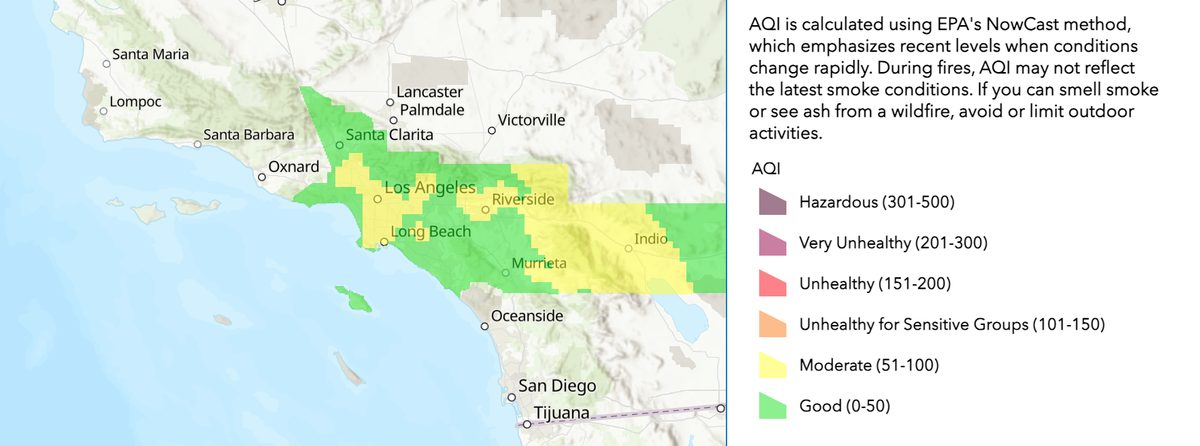Locals share their concerns about the poor air quality we are experiencing in the valley
Southern California tends to experience its worst air quality over the summer and also during wildfire season.
During a morning workout in Palm Springs, coaches decided to run light walk-through drills instead of a full on field work with the Palm Springs High School football team due to air quality.

Viewers are sending in images that show what a difference a day would make; see below:
Send us your videos and pictures of the poor air quality you are seeing - share@kesq.com

A local woman says her only means of transportation is her bike. She says was riding her bike late Sunday night and Monday morning when she was caught in a wind storm. "It's just too much, and I can barely see at night as it is, too.," says a Cathedral City resident and bicycle traveler, Michelle Duran. "So it was hard for me to ride around at nighttime like that. It basically walked part ways with my bike because it was too hard for me to see."
What can you do to stay safe from poor air quality?
- Reduce your time outdoors to under 30 minutes when AQI is high. Also, reduce the intensity of outdoor activity. ...
- If you must go outdoors, consider wearing a mask. ...
- Keep your air indoors healthy by keeping the windows and doors closed.
The South Coast Air Quality Management District posted a release saying winds from thunderstorms in the Imperial Valley and Coachella Valley have caused hazardous particle pollution levels throughout the Coachella Valley.
Follow the South Coast AQMD AQI map in your area by clicking the image below: screenshot Photo taken August 1st at 12 noon.

No matter if you are a part of the sensitive groups, air quality on Monday, July 31st, is considered hazardous in the Coachella Valley. Health officials urge everyone to stay inside as much as possible.
Who is considered in a sensitive group?
High risk groups include children under 18 and an older population of people with chronic heart or lung disease, pregnant people, and people with diabetes. Adults who are active outdoors, including outdoor workers and avid exercisers, can be considered at higher risk as well because of prolonged exposure, according to the American Lung Association.




